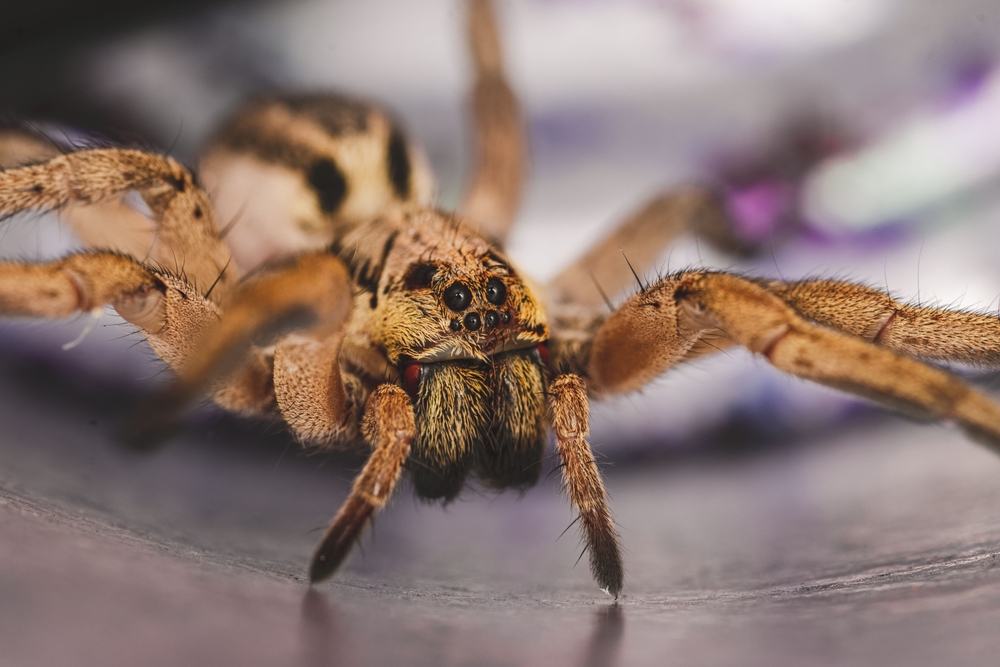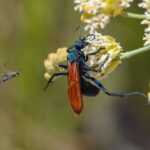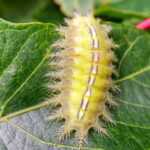Wolf Spiders Poisonous? Understanding the Dangers of Their Bites
Discover the truth about wolf spider bites. Are they poisonous? Learn the potential risks and how to stay safe. Read the article for essential insights.
Are Wolf Spiders Poisonous? Symptoms and Treatment Explained
Are wolf spiders poisonous? The short answer: no, wolf spiders are not poisonous. They are venomous, meaning they inject venom through their bites, but their bites are generally harmless to humans. This article will explain the differences between venomous and poisonous, the effects of a wolf spider bite, and when to seek medical attention. Wolf spider encounters are common, and understanding their nature can help reduce unnecessary fear and improve safety when a wolf spider is found in your environment. Learning more about the wolf spider can help you better identify and respond to these arachnids.
Introduction to Wolf Spiders
Wolf spiders are a common sight in homes and gardens around the world, with over 2,400 species found across nearly every continent. Unlike many other spiders that rely on spinning webs to catch their prey, wolf spiders are solitary hunters, using their excellent eyesight and impressive speed to chase down insects and other small creatures. Their large eyes, arranged in three rows, give them a distinctive look and help them spot movement even in low light.
The garden wolf spider, also known as Tasmanicosa godeffroyi, is the most common species in Australia and can be identified by its size and color. Tasmanicosa bites typically cause mild, localized symptoms similar to other wolf spider bites, such as redness and swelling, and are not considered dangerous to humans.
While wolf spiders may look intimidating due to their size and hairy appearance, they are generally harmless to humans. Most wolf spider bites occur only when the spider feels threatened, and these bites typically result in mild symptoms such as redness, swelling, and itching at the bite site. Understanding their behavior and natural habitat can help you prevent wolf spider bites and appreciate the important role these spiders play in controlling pest populations. In this article, we’ll explore everything you need to know about wolf spiders, from their unique hunting strategies to tips on keeping them out of your home.
- Wolf spiders are venomous but not considered dangerous to humans, causing only mild and temporary symptoms after a bite.
- Prompt first aid and awareness of symptoms can effectively manage wolf spider bites and prevent complications.
- Wolf spiders play a crucial role in controlling pest populations, making them beneficial for maintaining balanced ecosystems.
Are Wolf Spiders Poisonous?
A common question about wolf spiders is whether they are poisonous or not. It’s important to distinguish between poisonous and venomous animals. Poisonous animals are harmful when consumed, whereas venomous animals inject toxins via bites or stings. Wolf spiders are venomous, meaning they inject venom through their bites but do not produce poison harmful when ingested or touched.
Wolf spiders will only bite humans when they feel threatened or cornered. When a person is bit by a wolf spider, the bite may cause redness, swelling, and mild discomfort, but serious effects are rare. Though their bites can be painful, they are not dangerous to humans. Most wolf spider bites result in mild and temporary pain and swelling. Their venom primarily causes mild, localized symptoms that subside relatively quickly.
So, while wolf spiders may sound intimidating due to their classification as venomous animals, they are not considered dangerous to human health. This knowledge can help alleviate fears and prevent unnecessary panic when encountering them.
Understanding Wolf Spider Venom
Wolf spider venom, designed to immobilize and subdue prey, contains enzymes and neurotoxins vital to their hunting strategy. When a wolf spider bites its prey, the venom is injected through specialized fangs, quickly incapacitating the victim and making it easier for the spider to consume.
Different wolf spider species produce various types of venom, each tailored to their specific hunting needs and prey. This variation in venom composition is a testament to the adaptability and evolutionary success of wolf spiders. Their venom’s primary function is to immobilize and digest prey, ensuring efficient feeding and survival.
Recognizing the role of venom in their lives highlights their importance in the ecosystem and explains why most bites are not cause for alarm. The venom is not intended to harm humans but to aid the spider in its survival and hunting efforts.
Effects of a Wolf Spider Bite
A wolf spider bite can be concerning, but knowing what to expect makes it more manageable. Wolf spider bites can cause immediate reactions like pain, redness, and swelling at the bite site. These symptoms, similar to a bee sting, can be painful but are generally not life-threatening.
Some individuals may experience more severe allergic reactions, including increased swelling, itching, and redness around the bite area. In such cases, antihistamines can alleviate symptoms and provide relief. It is also important to cover the bite area to prevent infection from scratching or external contaminants. In rare cases, symptoms may be more severe and require additional attention.
While most bug bite result in mild symptoms, monitoring the bite site for any worsening conditions is important. Understanding these effects can help you react appropriately and seek medical attention if necessary. Medical treatment should be sought if symptoms persist, worsen, or if there are signs of a severe reaction.
When to Seek Medical Attention for Wolf Spider Bites
Knowing when to seek medical attention after a wolf spider bite ensures your safety. Severe symptoms needing immediate help include difficulty breathing, indicating a severe allergic reaction. Other severe allergic reaction signs include facial swelling and hives, which should not be ignored.
Infections can occur, and worsening symptoms like intense stomach cramps, fever, or bite wound necrosis require medical evaluation. Seek care if the bite wound does not improve or symptoms worsen over time.
If you suspect a bite from a more dangerous spider like a Brown recluse spiders, immediate medical attention is necessary. Awareness of severe symptoms can significantly improve management of a wolf spider bite.
First Aid for Wolf Spider Bites
Prompt first aid after a wolf spider bite can minimize discomfort and prevent complications. Initially, wash the bite area with warm soap and water to remove dirt and bacteria. This step helps prevent infection and ensures the bite site is clean.
Using an ice pack reduces swelling and alleviates discomfort. Apply it in intervals of 10-15 minutes. Avoid scratching the bite area, as this can lead to infection or further irritation. Covering the bite with a clean bandage helps protect it from external contaminants.
First aid measures are vital for managing wolf spider bites and ensuring swift recovery. Following these steps effectively reduces swelling, relieves pain, and can help prevent wolf spider bites from worsening.
Identifying Wolf Spiders
Identifying wolf spiders aids in understanding them and differentiating them from other spiders. Wolf spiders typically measure between 1/2 to 2 inches long, with common colors being grey or brown. Like all spiders, wolf spiders have eight legs, which is a key identifying feature. Female wolf spiders are usually larger than their male counterparts, which can aid in identification.
To distinguish wolf spiders from huntsman spiders, note their striped markings, streamlined appearance, and oval leg arrangement. They exhibit remarkable eyesight, evident from their distinctive reflective eyes, aiding in hunting and avoiding predators. Wolf spiders have a unique eye arrangement, including four small eyes placed in a row at the bottom, which, along with other small eyes, contribute to their distinctive visual features.
The garden wolf spider, also known as Tasmanicosa godeffroyi, is the most common species in Australia and can be identified by its size and color. Tasmanicosa bites typically cause mild, localized symptoms similar to other wolf spider bites, and are not considered dangerous to humans. Recognizing these characteristics helps identify wolf spiders and appreciate their role in the ecosystem.
Biology of Wolf Spiders
Wolf spiders are fascinating solitary hunters, known for their excellent eyesight and agile hunting skills. Unlike many other spiders that rely on spinning webs to trap their prey, wolf spiders actively chase down insects and other small creatures, making them a common sight in grassy areas, gardens, and even inside homes. Their dark brown or gray bodies often feature distinctive stripes or markings, which help them blend into their natural habitat and avoid predators.
One of the most remarkable features of wolf spiders is their eight eyes, arranged in three rows, giving them exceptional vision to spot movement and hunt effectively, even in low light. They have eight legs, with the front pair being particularly strong and adapted for grasping prey. Female wolf spiders are typically larger than males and can live for several years, while males usually have a shorter lifespan of about one year.
Reproduction and Lifecycle
The reproductive cycle of wolf spiders is unique among spiders. After mating, female wolf spiders lay a clutch of eggs and wrap them in a silk egg sac, which they carry attached to their abdomen. When the eggs hatch, the young spiders, known as spiderlings, climb onto their mother’s back and remain there for several weeks. During this time, the spiderlings feed on the remaining yolk sac and grow until they are ready to disperse and begin hunting on their own.
Wolf spiders use their venom to immobilize prey, but their bites are rarely life threatening to humans. Most wolf spider bites cause mild symptoms similar to a bee sting or bug bite, such as redness, swelling, and itching at the bite site. In rare cases, a wolf spider bite can trigger a severe allergic reaction, leading to difficulty breathing or intense pain. If you experience these symptoms, it’s important to seek medical attention immediately.
Preventing Wolf Spider Bites
To prevent wolf spider bites, be mindful of their natural habitat. Wolf spiders are commonly found in grassy areas, gardens, and dark, undisturbed places like basements or sheds. Wearing gloves while gardening, sealing cracks and crevices around your home, and keeping living spaces clutter-free can help reduce the risk of encountering these spiders. This is especially important if you have pets or young children, as curious hands and paws may disturb a hidden spider.
Beyond their unique biology and behavior, wolf spiders play a vital role in controlling insect populations, making them beneficial for gardens and crops. By understanding more about wolf spiders and taking simple steps to prevent unwanted encounters, you can appreciate these solitary creatures and their important place in the ecosystem.
Common Habitats of Wolf Spiders
Wolf spiders prefer habitats like burrows or established nests, providing protection and a strategic hunting advantage. They are commonly found in a variety of environments, including grassy areas, forests, and gardens. States like Missouri, Texas, and California often have high concentrations of wolf spiders.
Indoors, wolf spiders are often near door frames and houseplants, and may enter your house seeking shelter or prey. At night, these spiders are commonly seen hunting in fields or under vegetation, taking advantage of the cover and abundant prey available in these areas.
Knowing their preferred habitats helps manage and prevent wolf spider encounters, whether inside your home or in your garden. Wolf spiders live in diverse places, from outdoor environments like forests and gardens to indoor spaces such as houses.
Behavioral Traits of Wolf Spiders
Wolf spiders are known for unique behavioral traits that set them apart from many other spiders. They often rely on camouflage to ambush insects in their environment, using their coloration to blend in with their surroundings. Their hunting strategy involves chasing and pouncing on prey, showcasing agility and speed. Much like wolves, wolf spiders are solitary hunters that stalk and pursue their prey with remarkable speed and precision.
Active and nocturnal, they hunt at night using excellent eyesight, speed, and agility. They capture prey by chasing them rather than spinning webs, a trait that distinguishes them from many other spiders.
Wolf spiders prefer solitude and typically do not build webs for capturing prey. They may display defensive behavior, including jumping, when they feel threatened. Recognizing these behaviors helps better appreciate these fascinating solitary creatures and their role in the ecosystem.
Wolf Spider vs. Other Spiders
When it comes to spider bites, not all spiders are created equal. Wolf spiders are often mistaken for more dangerous species like brown recluse spiders, but there are key differences that set them apart. Wolf spiders are known for their robust bodies, dark brown or gray coloring, and distinctive eye arrangement—eight eyes in three rows, with two large eyes that reflect light. In contrast, brown recluses are smaller, lighter in color, and have a violin-shaped marking on their back.
Unlike many other spiders that spin webs to trap their prey, wolf spiders are solitary creatures that actively hunt, relying on their speed and excellent eyesight. Brown recluses and other venomous animals tend to hide in dark, undisturbed areas and rarely venture out in search of food. Most wolf spider bites result in mild symptoms, such as localized pain and swelling, while bites from brown recluses can cause severe pain, necrotic ulcers, and require immediate medical attention.
Another key difference is that wolf spiders are not considered dangerous to humans, whereas some other spiders, like brown recluses, can pose serious health risks. Recognizing these differences can help you identify wolf spiders and avoid unnecessary worry if you encounter one in your home or garden.
Preventing Wolf Spider Encounters
Preventing wolf spider encounters requires a proactive approach. Regular cleaning, such as vacuuming and sweeping, can deter them from settling indoors. Removing clutter and debris around the home can eliminate hiding spots for wolf spiders, making your home less attractive to them.
Natural repellents like peppermint oil or diatomaceous earth can keep wolf spiders at bay. Installing outdoor lighting with warm tones can reduce insect activity near your home, making it less appealing to wolf spiders. Creating a perimeter barrier with insecticides can deter wolf spiders from approaching your home.
Sealing gaps and holes in windows, doors, and foundations prevents wolf spiders from entering your home. Regular pest control services can prevent wolf spiders from entering homes and mitigate potential infestations by sealing entry points. Professionals from Responsible Pest & Scorpion Control are trained to identify wolf spider activity and implement strategies to keep them at bay.
Natural Remedies for Spider Control
If you want to prevent wolf spider bites and keep wolf spiders out of your home without using harsh chemicals, there are several natural remedies you can try. Start by keeping your living spaces clean and clutter-free, as wolf spiders and other spiders often seek out dark, undisturbed areas to hide. Regularly vacuuming and sweeping can remove young spiders, egg sacs, and potential prey like insects and ants.
Essential oils such as peppermint, tea tree, or citrus can act as natural repellents—simply mix a few drops with water and spray around windows, doors, and other entry points. Diatomaceous earth is another effective option; sprinkle it in areas where wolf spiders may enter, such as along baseboards or in the garden, to create a barrier that is safe for humans and pets but deadly to spiders.
Sealing cracks and gaps in your home’s foundation, windows, and doors is crucial to prevent wolf spider inside invasions. In outdoor spaces, wear gloves when gardening and be cautious when moving rocks, logs, or debris where wolf spiders may live. By taking these simple steps, you can reduce the risk of spider bites, relieve itching and swelling from minor bites, and maintain a spider-free environment naturally.
The Role of Wolf Spiders in Pest Control
Wolf spiders play a significant role in controlling pest populations, making them essential to the ecosystem. They serve as effective predators, regulating populations of common household pests like flies and cockroaches. Unlike other spiders that spin webs, wolf spiders actively hunt prey, enhancing their effectiveness in pest control.
The presence of wolf spiders can indicate a balanced ecosystem and a healthy environment for pest control. Therefore, it is not recommended to eliminate wolf spiders from outdoor environments, as they contribute positively to pest management.
Professional Pest Control Services
Effectively managing wolf spider infestations often requires professional pest control. These services target the spiders and their food sources, reducing the chances of infestation.
If you are experiencing issues with wolf spiders or have concerns about scorpions making a scratching noise in walls, seek professional pest control services from Responsible Pest & Scorpion Control to ensure your home remains safe and spider-free.
Wolf spiders, while intimidating, are not considered dangerous to humans. Understanding their venom, identifying traits, and habitats can help mitigate fears and manage encounters effectively. Wolf spider bites typically result in mild symptoms, and knowing when to seek medical attention is crucial for safety. First aid measures are essential in managing bites and preventing complications.
Wolf spiders play a vital role in pest control, helping to maintain a balanced ecosystem. Preventing their encounters through regular cleaning, using natural repellents, and professional pest control services can ensure your home remains safe. Embracing the role of wolf spiders in the ecosystem underscores the importance of coexisting with these fascinating creatures.
Frequently Asked Questions
Are wolf spiders dangerous?
Wolf spiders are not dangerous to humans; their bites can cause mild pain and swelling but typically do not require medical attention. It’s always a good idea to take steps to prevent any bites.
Are wolf spiders poisonous or venomous?
Wolf spiders are venomous, as they can inject venom with their bites, but they are not poisonous when ingested or touched. The wolf spider uses its venom primarily to subdue prey, but it poses little threat to humans. Understanding that wolf spiders are venomous animals, not poisonous animals, helps clarify their behavior and risks associated with their bites.
What should I do if I get bitten by a wolf spider?
If bitten by a wolf spider, wash the area with soap and water, apply an ice pack to reduce swelling, and avoid scratching. Seek medical attention if you experience severe symptoms.
How can I prevent wolf spider encounters in my home?
To prevent wolf spider encounters in your home, regularly clean and declutter your space, use natural repellents, and seal any gaps in windows and doors. This proactive approach will help keep these spiders at bay.
What role do wolf spiders play in pest control?
Wolf spiders are effective in pest control as they actively hunt and consume common household pests such as flies and cockroaches. Their presence can naturally reduce the population of these unwanted insects.



